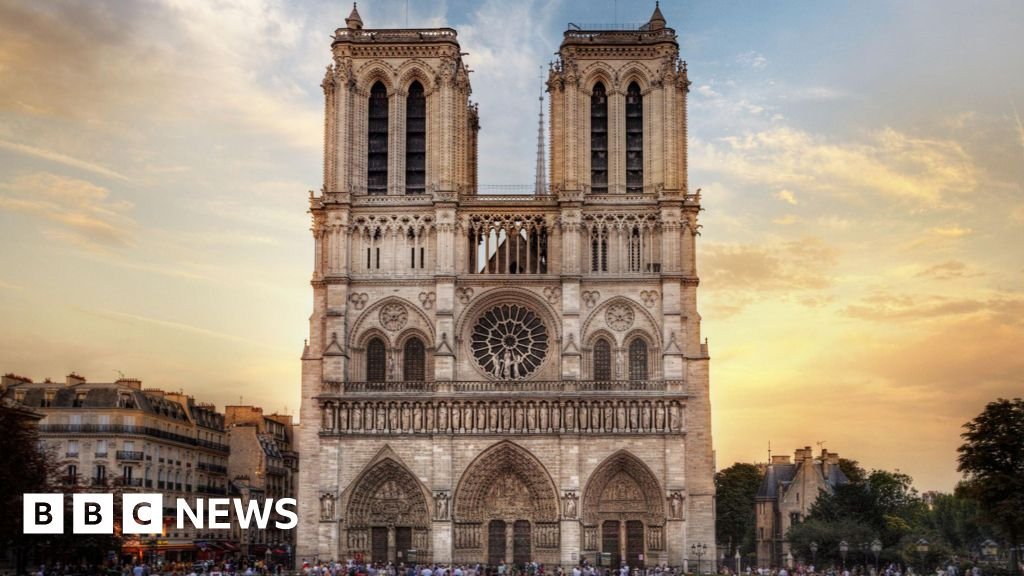The cathedral clergy also honored certain “miraculés” – miraculously survivors.
Among them is a 14th-century statue in the choir, known as the Virgin Column, which narrowly escaped being crushed by the masonry.
Sixteen massive bronze statues of the apostles and evangelists that surrounded the spire were taken away for renovation just four days before the fire.
After surveying the destruction the next day, Macron gave what many at the time seemed like a no-brainer: to reopen Notre Dame to visitors for five years.
A government agency was established by law to direct the work, and an appeal for funds elicited an immediate response. A total of 846 million euros was raised, largely from large sponsors, but also from hundreds of thousands of small donors.
Jean-Louis Georgelin, an army general who shared Macron’s impatience with the “legacy” committees and establishment, was given responsibility for the task.
“They’re used to dealing with frigates. This is an aircraft carrier,” he said.
Georgelin is credited with the undoubted success of the project, but he died in an accident in the Pyrenees in August 2023 and was replaced by Philippe Jost.
An estimated 2,000 masons, carpenters, restorers, insurers, foundries, art historians, sculptors and engineers worked on the project, giving a huge boost to French arts and crafts.
Many trades – for example, stone carving – have seen a significant increase in apprenticeships as a result of publicity.
“(The Notre Dame project) was the equivalent of the World’s Fair in the sense that it was a showcase of our craftsmanship. It’s a wonderful showcase at an international level,” said Pascal Payen-Appenzeller, whose association promotes traditional building skills. .
The project’s first task was to make the site safe and then dismantle the massive tangle of metal scaffolding that had previously surrounded the spire, but had melted in the fire and fused with the stonework.

